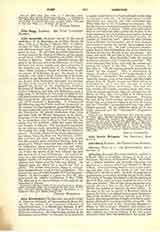

John Scholasticus (O Scholastikos), also called JOHN OF ANTIOCH, Patriarch of Constantinople (JOHN III, 565-77), the author of an important collection of ecclesiastical laws; b. at Sirimis near Antioch; d. 577. Of his life there is little to say. He had been a lawyer before his ordination. He then became a priest in the Antiochene patriarchate; he was sent by his patriarch as legate (apocrisarius) to Constantinople in the reign of Justinian I (527-65). In 565 Eutychius I of Constantinople was deposed, and John succeeded him. When John died in 577, Eutychius was restored. Before his elevation to the patriarchate John had already made a collection of canons. There were such collections in use before his time; at first the decrees of the more important synods had been put together in loose collections, such as the “Codex canonum” used by the Council of Chalcedon (451). Since the fifth century these collections had increased, and at last attempts were made to replace the merely chronological order by a systematic one. Of such systematic arrangements that of John Scholasticus was, if not absolutely the first, at any rate the first of any importance. Between the years 540 and 560 he made what he called Sunagoge kanonon. Pope Nicholas I (858-67), writing to Photius, alludes to it as “Concordia canonum”. The work contained fifty titles, each with the canons concerning the subject of the title. For instance, the first title is: “Of the honor towards patriarchs ordained by the Canons”. This is established by canons vii and vi of Nica, ii of Constantinople I, viii of Ephesus. Altogether the compiler quotes the Apostolic canons, those of ten synods, and sixty-eight canons from St. Basil’s second and third letters to Amphilochius. It is the first attempt to collect canons from the letters of Fathers. The first edition contains 377 canons, arranged under fifty titles. After he became patriarch, John III enlarged his collection to sixty titles, and added to it eighty-seven chapters from the “Novella” of Justinian. Towards the end of the sixth century another author added twenty-five more chapters taken from both the Codex and the “Novella” concerning civil laws that affect Church matters. So the collection grew till it was finally enlarged into the “Nomocanon” (Nomokanon) of Photius.
ADRIAN FORTESCUE

